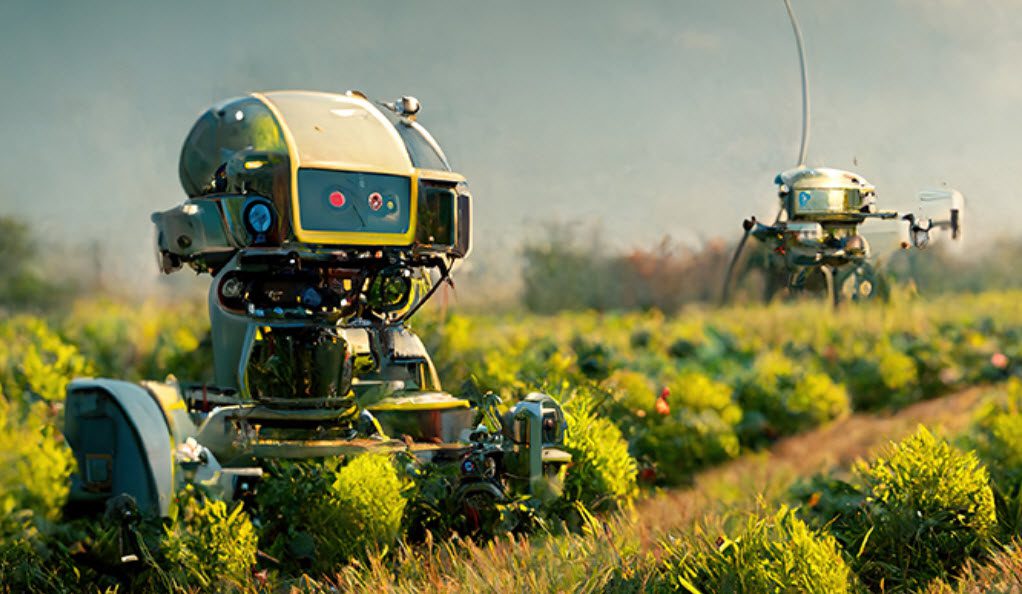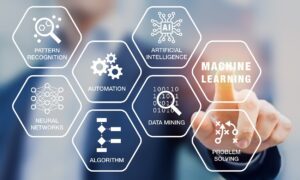Thanks to advanced technologies, the future of agriculture will take a different shape, the processes will be automated and more compatible with the environment.
Since several years ago, Google has taken steps in the direction of agriculture equipped with artificial intelligence. The specialists of this company have realized that since the mapping and planning of crops in agricultural lands is related to data science, they can play a useful role in this field.
Keith Franklin, an agricultural engineer from Harper Adams University in England, says that only 1% of the population is responsible for producing food for the other 99%, and this 1% is facing problems such as continuous population growth and climate change. According to Franklin, farmers of the future should go for “precision agriculture”.
In precision agriculture, land should be divided into smaller plots and operations should be carried out more precisely. Managing these smaller parts reduces waste and increases efficiency. As a result, you can do the right thing at the right time and in the right place. But what is the role of artificial intelligence in this?
Advantages and disadvantages of today’s machines
The machines currently used in agriculture are not always very accurate. In recent years, machines have become larger and less accurate. Large sprayers can cover a large area, but treat all areas equally. These large machines may have a good final output, but they are not very accurate.
Another problem is the bad condition of the soil. Compacted soil is not suitable for planting and growing crops, and the large and heavy machinery currently used in agriculture compacts the soil. As a result, the soil structure is destroyed and the agricultural land becomes unusable.
Heavy machinery has other weaknesses. For example, when it rains, they sink into the mud and taking them out damages the soil even more. Franklin likens these problems of today’s machinery to the challenges of using steam engine tractors of the past.
Advantages and disadvantages of today’s machines
Agriculture equipped with artificial intelligence
The future of agriculture equipped with artificial intelligence offers a solution to the aforementioned problems. Thanks to this technology, instead of large machines, it is possible to use a mass of small machines that do not even need the presence of a passenger. These machines will be different both in terms of appearance and function.
These small robots, which are self-driving and can be made in the dimensions of a regular vacuum cleaner, treat each plant in a unique way. In other words, they are more accurate, and the low weight of these machines solves the problem of soil compaction, and due to the fact that they work in mass, they can cover a large area.
The aforementioned mass robots must be managed; Because of this, working with heavy machinery becomes the supervision of automated operations. Franklin says: “Small cars are also safer. For example, if a large tractor breaks down, it can damage land fences, roads, walls, or even injure people. But a robot the size of a vacuum cleaner will not cause such damage.”
Researchers automated a small tractor using existing technologies to show that the world is ready to adopt such technologies.
Franklin, during the Hands-Free Hectare project, intends to measure the application of artificial intelligence in the future of agriculture; For this purpose, the researchers decided to manage one hectare of agricultural land using only automatic machinery.
Six months after the start of the project, a self-driving tractor was used to plant the seeds. After the crops grow, another robot is used for spraying and spreading fertilizers. The high quality of the final product has made Franklin call the findings of the project transformative. All the technology and code used in this project was already available; It’s just that no one had merged them until now.
One of the advantages of this type of agriculture is the use of machine learning. Robots take care of products using a multispectral camera. Another algorithm examines different parts of the products to measure their health status. The increase in the quality of the products during the second year showed that the robots used are really capable of learning.
Agriculture equipped with artificial intelligence
Agriculture equipped with artificial intelligence and weather conditions
One of the interesting aspects of this project is the weather condition. During the first year of the project, the weather was rainy and the ground was full of mud and swamp. Although the farmers of the surrounding fields could not use their big machines in these conditions, the performance of the farmer’s robot was not affected and continued to work. When harvesting, the harvester was programmed to follow the tractor and dump the harvested crops into the wagon behind the tractor. All along the track, the two cars were in contact. The harvester determined the speed and direction of the tractor using GPS systems.
Franklin brings his students to the farm to observe robots harvesting crops. He believes that this project aims to inspire the future generation of agricultural engineers and farmers.
He continues: “The products of the land are of high quality and although they are not of the best quality, it can be said that they are among the best agricultural products in England.”
The next challenge for researchers is to expand the Hands-Free Hectare model and extend it to land with different areas.
Other artificial intelligence projects
English startup Small Robot Company has also created agricultural robots that detect and destroy weeds using a camera. Another company, Farm Droid, has developed a solar-powered robot that can be in the field during the crop planting cycle. This robot starts its work by planting seeds and since it remembers where it planted each seed, it returns to the place and cuts the surrounding weeds.
- Types of artificial intelligence applications in daily life
- Cohort analysis in the banking industry with the approach of customer behavior analysis
- Tesla’s humanoid robot now learns human movements with artificial intelligence
- Google introduced new artificial intelligence tools to speed up the process of making medicines
- What is a data lake?
All these operations are performed without the use of a camera; Because the robot uses a technique called “preemptive weeding” to kill the surrounding weeds before the seed grows. In this way, farmers will no longer need to use pesticides and herbicides.
Among other artificial intelligence projects that are developing in this field, we can mention John Deere, which is one of the largest artificial intelligence companies in the world. The last trade show of this company was dedicated to artificial intelligence for agriculture. Franklin believes that these developments are now a reality and that agricultural efficiency and productivity can be improved by relying on automated machinery.
Future jobs in agriculture
Automation in agricultural fields, in addition to increasing the efficiency of operations, also makes life easier for humans and opens up new jobs for them.
Some people have to supervise the bots. Agronomists or seed specialists should also be present in the field to assess the health status of crops. Of course, due to the large amount of data available to them, they should also be trained as data experts.
Cyber security is one of the biggest problems in the world of technology. Ransomware attacks in the agricultural industry can put the harvest of final products at risk. With the automation of agriculture, the need for cyber security experts will also increase. People who are interested in both robotics and agriculture are employed as agricultural roboticists.
Of course, the realization of all the above requires the development of suitable infrastructure in remote agricultural lands. For example, all pitches must have 4G or 5G internet access. However, what is clear is that the dream of automating the future of agriculture is exciting and will come true sooner or later.








